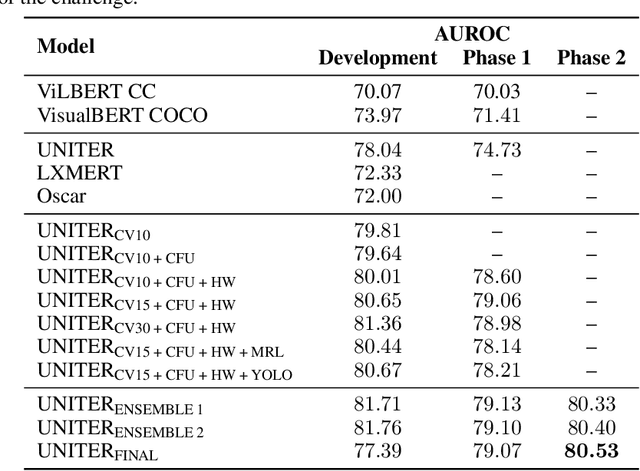Santhosh Rajamanickam
A Multimodal Framework for the Detection of Hateful Memes
Dec 24, 2020



Abstract:An increasingly common expression of online hate speech is multimodal in nature and comes in the form of memes. Designing systems to automatically detect hateful content is of paramount importance if we are to mitigate its undesirable effects on the society at large. The detection of multimodal hate speech is an intrinsically difficult and open problem: memes convey a message using both images and text and, hence, require multimodal reasoning and joint visual and language understanding. In this work, we seek to advance this line of research and develop a multimodal framework for the detection of hateful memes. We improve the performance of existing multimodal approaches beyond simple fine-tuning and, among others, show the effectiveness of upsampling of contrastive examples to encourage multimodality and ensemble learning based on cross-validation to improve robustness. We furthermore analyze model misclassifications and discuss a number of hypothesis-driven augmentations and their effects on performance, presenting important implications for future research in the field. Our best approach comprises an ensemble of UNITER-based models and achieves an AUROC score of 80.53, placing us 4th on phase 2 of the 2020 Hateful Memes Challenge organized by Facebook.
Joint Modelling of Emotion and Abusive Language Detection
May 28, 2020



Abstract:The rise of online communication platforms has been accompanied by some undesirable effects, such as the proliferation of aggressive and abusive behaviour online. Aiming to tackle this problem, the natural language processing (NLP) community has experimented with a range of techniques for abuse detection. While achieving substantial success, these methods have so far only focused on modelling the linguistic properties of the comments and the online communities of users, disregarding the emotional state of the users and how this might affect their language. The latter is, however, inextricably linked to abusive behaviour. In this paper, we present the first joint model of emotion and abusive language detection, experimenting in a multi-task learning framework that allows one task to inform the other. Our results demonstrate that incorporating affective features leads to significant improvements in abuse detection performance across datasets.
 Add to Chrome
Add to Chrome Add to Firefox
Add to Firefox Add to Edge
Add to Edge